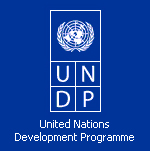
United Nations Development Programme (UNDP)
Joined August 2012
A world of development experience
This is a critical time for the world. At UNDP, we see this period as a huge opportunity to advance the global sustainable development agenda. Last year, world leaders adopted the2030 Agenda for Sustainable Development to continue the work of the Millennium Development Goals. UNDP is working to strengthen new frameworks for development, disaster risk reduction and climate change. We support countries’ efforts to achieve the new Sustainable Development Goals, or Global Goals, which will guide global development priorities for the next 15 years.
UNDP focuses on helping countries build and share solutions in three main areas:
In all our activities, we encourage the protection of human rights and the empowerment of women, minorities and the poorest and most vulnerable.
The annual Human Development Report, commissioned by UNDP, focuses the global debate on key development issues, providing new measurement tools, innovative analysis and often controversial policy proposals. The global Report’s analytical framework and inclusive approach carry over into regional, national and local Human Development Reports, also supported by UNDP.
In each country office, the UNDP Resident Representative normally also serves as the Resident Coordinator of development activities for the United Nations system as a whole. Through such coordination, UNDP seeks to ensure the most effective use of UN and international aid resources.
UNDP also administers the UN Capital Development Fund, that helps developing countries grow their economies by supplementing existing sources of capital assistance by means of grants and loans; and UN Volunteers, which fields over 6,000 volunteers from 160 countries in support of peace and development through volunteerism worldwide.
Fit-for-purpose to deliver on Agenda 2030
As countries start implementing the 2030 Agenda, UNDP is ready for action.
UNDP’s strength comes from having the trust of developing countries, owing to our impartial character, longstanding presence and commitment to the poorest and most vulnerable. We also play a key role as the backbone of the wider UN Development System, helping agencies work together for sustainable development.
Our Strategic Plan and Structural Change have made us more focused, efficient, and country-oriented. The new structure integrates crisis and gender for the first time in all areas of policy and programmes. UNDP’s Strategic Plan 2014-17 — centred on seven sets of outcomes, compared to the previous 35 — presents a unifying vision to best help countries eradicate poverty and reduce inequalities and exclusion.
Our new Integrated Results and Resources Framework clearly shows the allocation of resources and results achieved, allowing stakeholders to easily monitor performance, learn lessons, and hold the organization accountable for the funds entrusted to it. Executive Board members were pleased with the new reporting format based on the Framework, and welcomed the 2015 Annual Report as a step towards greater results-based management.
UNDP has improved standards for program planning and quality assurance, and a robust process for program appraisal. Country Program Documents show better targeting of resources. Data is used more rigorously to inform programming. New quality standards for projects are being rolled out in 2016.
UNDP is today a leaner and more efficient organization, operating even closer to the field. UNDP’s new structure reflects a staff reduction of 12% at headquarters and regional levels. We have also moved a further 20% of staff from New York to regional hubs to strengthen our support to country offices.
For two consecutive years, the Aid Transparency Index has recognized UNDP as the most transparent development agency in the world, while AidData (2015) names UNDP among the development partners that communicate most frequently with host government counterparts. We have put in place an open data platform that enables wide global usage of data. More details of UNDP’s activities, budgets and results are being published than ever before on open.undp.org, covering 4,743 projects in 155 countries and territories.
As of 1 January 2015, UNDP adopted mandatory Social and Environmental Standards for all of its projects and programmes. These standards will strengthen UNDP’s efforts for increased quality in its programmes and ensure social and environmental benefits for the people we serve.
UNDP is guided by the United Nations Development Group’s common approach implementing the SDGs, called MAPS, or Mainstreaming, Acceleration, and Policy Support.
Adequate levels of Core Resources and lightly earmarked funds are essential for UNDP to carry out its mandate and to coordinate UN system support to help countries “land” the SDGs. With about $5 billion in voluntary contributions annually, UNDP remains a partner of choice and passes the “market test” in an environment in which partners can choose from many organizations to work with.
All sources of finance — domestic and international, public and private — are needed to achieve the SDGs. UNDP is redoubling efforts to develop partnerships with International Financial Institutions, civil society, the private sector, as well as individuals. The aim is to have UNDP support governments in securing increasingly diverse sources of innovative financing for development and ensure that such financing is risk-informed.
